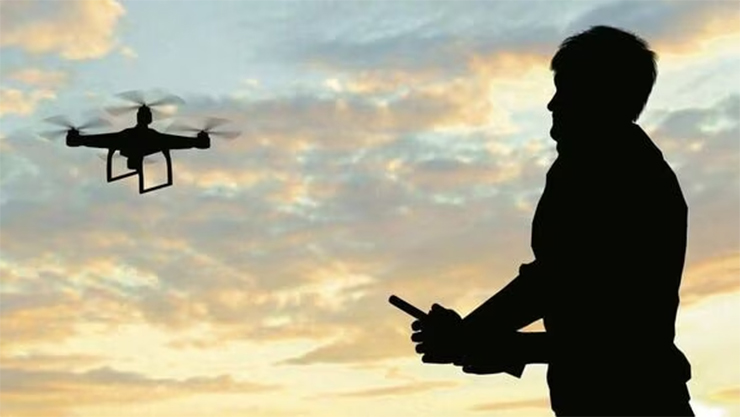
New Delhi: India witnessed a concerning rise in threats from unmanned aerial vehicles (UAVs) when two explosive-laden drones attacked the Indian Air Force’s (IAF) base in Jammu. This incident occurred in June 2021. Subsequently, there were multiple recoveries of drones along the Pakistan border, often carrying drugs, arms, and ammunition. Last year, the Border Security Force (BSF) recorded over 190 sightings and successfully intercepted or retrieved 22 drones along the Pakistan border.
According to a report, the size of the military Unmanned aerial vehicles (UAVs) market in China amounted to 29 billion yuan in 2019 and was projected to increase by over 10 billion yuan by 2020.
As per another report, to seek protection against neighbouring China and Pakistan, India developed Rustom-I UAVs in 2009 and armed Rustom-II MALE UAVs in 2015. In August 2019, Russia’s Ministry of Defence released footage of its Okhotnik, or Hunter drone.
In an interview with the media, Kiran Raju, Founder and CEO of Hyderabad-based defence tech company Grene Robotics, claimed that ‘Indrajaal’ – India’s inaugural autonomous drone-defence dome has the capability to cover a vast area of 4000 square kilometres per system, thereby eliminating the necessity of deploying multiple Counter-Unmanned Aircraft Systems (C-UASs).
Retired Indian Air Force wing commander MVN Sai, who is the CEO – Defence for Grene Robotics, said, “In countries like the USA, larger drones must comply with regulations requiring them to report their position and digital identification when taking flight. Additionally, they are limited to flying through designated corridors. Similar regulations are being developed in India.”
According to a report, India reportedly ordered 10 combat-capable Heron drones from Israel in 2015. In 2019, India bought 50 Heron UAVs from Israel. India is also considering the possibility of purchasing MQ-9 Reapers from the United States, whether these models will be armed or unarmed is still being debated.
MVN Sai stressed that ‘Indrajaal’ employs multi-layer elimination of the same target using sophisticated sensor fusion algorithms. Its detection accuracy, enhance observing the same object across different spectrums and by ensuring the closest point of detection to maintain high precision in terms of azimuth and elevation accuracy.
Earlier in April, the Indian armed forces cut down their requirement for the acquisition of US MQ-9B Predator high altitude long endurance (HALE) armed drones from 30 to 18 platforms – six each of the Indian Army, Navy, and the Air Force – which earlier was ten.
Meanwhile, MVN Sai noted, that if identified as a non-friendly threat, the system assesses the level of threat it poses to defended assets within the area. “These assessments are algorithmic in nature, supported by a rapid analysis tool that utilises data generated by the system. Artificial intelligence may also be employed to assist with data crunching and reveal patterns.”
Speaking about the recent developments, Raju noted that ‘Indrajaal’ is introducing a hard-kill system that showcases drone versus drone and loitering munition killer capabilities for the first time. “We have received a letter of intent (LOI) from one of the airports, indicating their intention to deploy Indrajaal in a few months,” Raju further added.
Experts in strategic affairs believe that Indrajaal, India’s own autonomous drone dome system, exemplifies the nation’s commitment to ‘Atmanirbhar’ (self-reliance) in building a futuristic arsenal. In contrast to China’s investments in similar technologies, Indrajaal stands out as a distributed and decentralized system with a wide coverage area.















